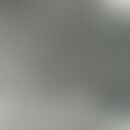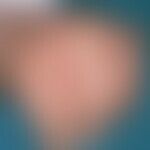Synonym(s)
HistoryThis section has been translated automatically.
DefinitionThis section has been translated automatically.
Rare, usually intensely itchy, intermittent (flare-up duration 2-3 weeks), time-limited sterile pustulosis of unknown origin occurring on the palms of the hands and soles of the feet. Episodic course with no symptoms for months. Spontaneous healing usually between the ages of 2 and 4.
You might also be interested in
EtiopathogenesisThis section has been translated automatically.
ManifestationThis section has been translated automatically.
LocalizationThis section has been translated automatically.
Clinical featuresThis section has been translated automatically.
HistologyThis section has been translated automatically.
Intraepidermal, mainly subcorneal, unilocular pustules with neutrophilic, sometimes also eosinophilic granulocytes. Perivascular round cell infiltrate in the upper dermis.
DiagnosisThis section has been translated automatically.
Differential diagnosisThis section has been translated automatically.
the most important differential diagnosis is superinfected scabies (mite detection necessary for differentiation)!
Further differential diagnoses:
- Transient neonatal pustular melanosis (similar clinical picture, characterized by lesional pigmentation)
- Impetigo contagiosa (detection of the pathogens)
- Syphilis connata (extremely rare today; serological evidence)
- Psoriasis pustulosa palmo-plantaris (very rare in newborns)
- impetiginized, dyshidrotic hand and foot eczema (extremely rare in newborns!).
TherapyThis section has been translated automatically.
External therapyThis section has been translated automatically.
Symptomatic, e.g. astringent shaking mixtures or ointments with oak bark or synthetic tanning agents (e.g. Tannolact cream, Tannosynt Lotio).
If the pustulation is very pronounced, application of weakly effective (possibly under-dosed) external glucocorticoids such as 0.5% hydrocortisone cream.
Alternatively a 2-3% polidocanol cream should be used.
Internal therapyThis section has been translated automatically.
Progression/forecastThis section has been translated automatically.
Case report(s)This section has been translated automatically.
The 7-month-old infant suffered since the 2nd month of life from relapsing-like pustular formations on both soles of the feet. The parents reported an agonizing itching, which regularly affected their postpartum rest. All local measures had been unsuccessful so far.
Findings: On both soles of the feet disseminated and grouped vesicles of 0.1-0.3 cm in size and pale yellow pustules on bright red erythema and plaques. Older lesions were characterized by a coarse lamellar scaling.
Diagnosis: No evidence of scabies. Pustule smear: Sterile. Histology: Detection of subcorneal unilocular pustules with neutrophil, sometimes eosinophilic granulocytes. Bulky, perivascular round cell infiltrate in the upper dermis.
Therapy: 0.5% hydrocortisone cream alternating with a 3% polidicanol cream.
Course: Further relapsing activities until 18 months of age. Afterwards, the relapses subside for another 3 months and healing takes place.
LiteratureThis section has been translated automatically.
- Braun-Falco M et al (2003) Palmoplantar vesicular lesions in childhood. Dermatologist 54: 156-159
- Ferreira S et al (2020) Infantile acropustulosis. J Paediatr Child Health 56:1165-1166.
- Good LM et al (2011) Infantile acropustulosis in internationally adopted children. J Am Acad Dermatol 65:763-771
- Hürlimann AF, Wüthrich B (1992) Infantile acropustulosis. Z Hautkr 67: 1073-1079
- Kahn G, Rywlin AM (1979) Acropustulosis of infancy. Arch Dermatol 115: 831-833
- Klein CE et al (1989) Infantile acropustulosis. Dermatologist 40: 501-503
- Mazereeuw-Hautier J (2004) Infantile acropustulosis. Press Med 33:1352-1354.
- Meiss F et al (2008) Infant with pustules on both plantae. Dermatology 59: 323-324
- Paloni G et al (2013) Acropustulosis of infancy. Arch Dis Child Fetal Neonatal Ed 98:F340.
Incoming links (4)
Acropustuloses; Acropustulosis infantilis; Newborns, skin changes; Transient neonatal pustular Melanosis;Outgoing links (16)
Atopic diathesis; Contagious impetigo; Dadps; Dyshidrotic dermatitis; Glucorticosteroids topical; Hydrocortisone; Papel; Polidocanol; Pruritus; Psoriasis pustulosa; ... Show allDisclaimer
Please ask your physician for a reliable diagnosis. This website is only meant as a reference.





